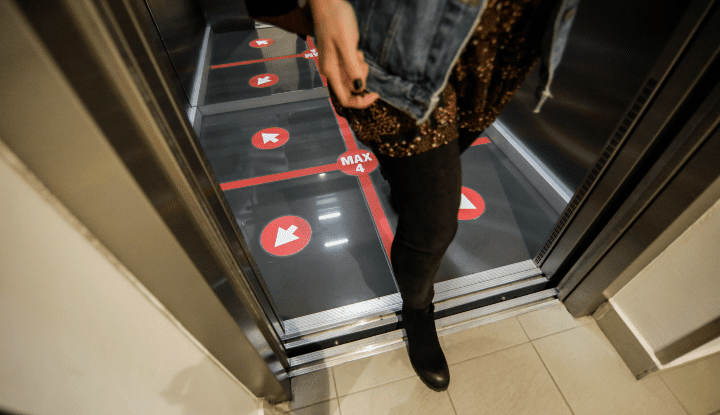As returning to the office causes trepidation for some workers, maintaining a safe work environment is paramount to both building managers and designers. This means initiatives meant to keep occupants safe must be both functional and visible.

Having quality partners, including janitorial companies, are great places to start, says Mark Rossolo, global director of public affairs at UL (formerly Underwriters Laboratories), in an article for BOMA International.
Curiously, the chemicals used in this COVID age can actually be part of the problem. Imagine scenarios, Rossolo notes, where people are using harsher chemicals to combat COVID-19, and they are cleaning more frequently, so more irritants are floating around inside buildings. Focusing on indoor-outdoor air exchange rates and making sure they are pulling enough fresh air in to adequately ventilate the building are important guidelines.
Design firm HOK offers some suggestions on indoor air quality. With poor air circulation creating a breeding ground for transmission of the virus, HVAC upgrades are a must in some buildings. An HVAC engineering firm can ensure buildings have adequate, and properly maintained, systems.
Potential upgrades include things like advanced building automation for real-time HVAC performance evaluation and correction, higher-rated air filters like MERV-13 and MERV-14, operable windows and technologies like ultraviolet germicidal irradiation (UVGI) in return air ducts. Spaces intended for groups can include carbon dioxide sensors so that ventilation increases along with occupancy and carbon dioxide levels.
Building security, in terms of monitoring the people and products entering a building, is a current must-have in most commercial buildings. Concerns about occupant capacity to prevent overcrowding must be addressed. Infrared scanners that can take the body temperature of people entering the building may also become a thing of the future.
There’s little doubt that some changes may stick around post-COVID, and technology will play an expanding role. Contactless solutions are already in demand as building occupants grow wary of high-touch areas. As Astudio Architects’ Director Richard Hyams writes in This Week in FM,
Building developers and managers will be capitalizing on tools such as voice or motion-activated technology and movement tracking apps, to make more of what this technology can offer. This could be a voice-controlled elevator, a remotely operated printer or the greater use of sensor and facial-recognition software.
Many of these changes, like expensive HVAC upgrades, won’t lure occupants back to commercial buildings if the measures are not clearly communicated. Communication strategies will play a huge role in occupant understanding. Signage throughout the buildings, displays in lobbies and elevators, a social media outreach strategy and building-specific mobile apps for regular users will assist building managers in getting their message across.


